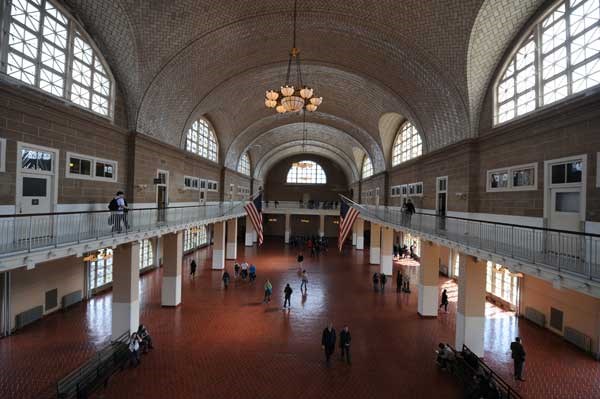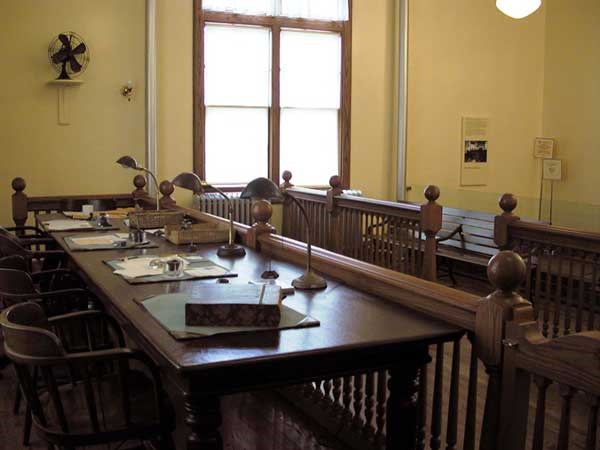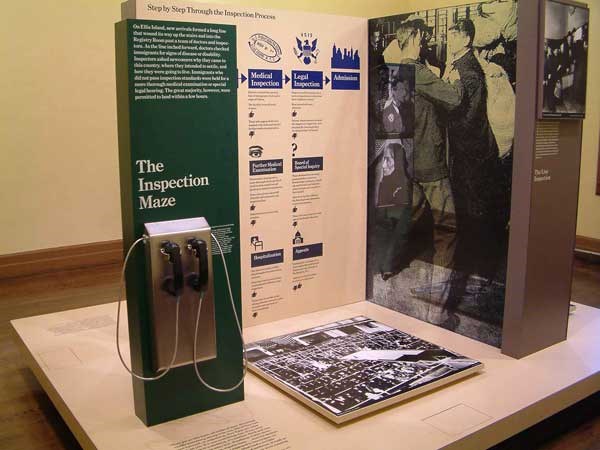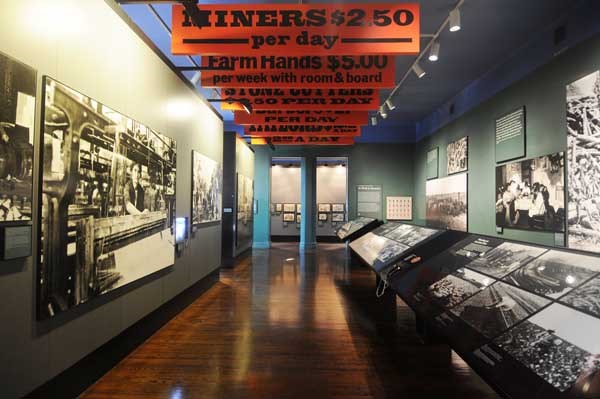|
The Registry Room 
Statue of Liberty NM, National Park Service Today, the enormous arched windows and immense open spaces of the Registry Room evoke a feeling of grandeur. For the immigrants, however, the room was often a loud, confusing and frightening place. Nearly every day, for over two decades (1900-1924) the Registry Room was filled with new arrivals waiting to be inspected and registered by Immigration Service officers. On many days, over 5,000 people would file through the space. For most immigrants, this great hall epitomized Ellis Island. It was here that immigrants underwent medical and legal examinations. Here they encountered the complex demands of the immigration laws and an American bureaucracy that could either grant or withhold permission to land in the United States. The Registry Room has been restored to its appearance in 1918-24, including several original wooden benches. Photographs of the room during other time periods can be seen on the east and west ends of the balcony. 
Statue of Liberty NM, National Park Service The Hearing Room 
Statue of Liberty NM, National Park Service Located in the "Through America's Gate" exhibit, the "Hearing Room," has been restored to look as it did around 1911, during the period when it served as a Board of Special Inquiry hearing room. About 10% of the persons arriving at Ellis Island were held for a legal hearing. Those thought "liable to become public charges," or suspected of being contract laborers or worse, received yellow cards marked "S.I.," which meant that their cases would be decided by a Board of Special Inquiry. Three boards were usually in session all day, and during busy seasons a fourth board was added. Each board held 50 to 100 hearings daily in the presence of an interpreter and a stenographer. Each board based its decision on the testimony of the immigrant and of friends or relatives allowed to speak on the immigrant's behalf. An immigrant who received an unfavorable decision from the board, could appeal directly to Washington, D.C., with the help of a lawyer often provided by an immigrant aid society. Approximately 15 to 20% of the aliens who appeared before the boards were ultimately denied admission to the United States. 
Statue of Liberty NM, National Park Service. Through America's Gate 
Statue of Liberty NM, National Park Service. The exhibits in the west wing on the second floor of the museum describe step-by-step what most new arrivals experienced on Ellis Island, the federal government's first immigrant inspection depot. Ellis Island's main function was to screen out those considered undesirable – the incurably ill, the impoverished, the disabled, criminals, and all others barred by the immigration laws of the United States. For the vast majority of immigrants, Ellis Island meant three to five hours of waiting for a brief medical and legal examination prior to admittance. For others, it meant a longer stay with additional testing or a legal hearing. For an unfortunate 2%, it meant exclusion and a return trip to the homeland. During Ellis Island's busiest years, this wing contained legal hearing rooms, waiting rooms for witnesses, detention quarters, and staff offices. The wing has been carefully restored to its appearance during the period 1918 to 1924. 
Statue of Liberty NM, National Park Service. Peak Immigration Years: 1880-1924 
Statue of Liberty NM, National Park Service. The exhibits in the east wing on the second floor of the museum explore immigration to the United States during the period from 1880 to 1924. The late 19th century and early 20th centuries saw the largest migrations of people in world history. Australia, New Zealand, Argentina, Brazil, and Canada were all popular destinations, but the majority of immigrants chose the United States. Between 1880 and 1924, the peak immigration years, over 26 million people entered the country. The exhibits in this wing explore immigration to the United States during this period. They describe its causes as well as its impact on those who left their homes, traveled thousands of miles to a strange land, and built new lives. 
Statue of Liberty NM, National Park Service. |
Last updated: November 14, 2013
